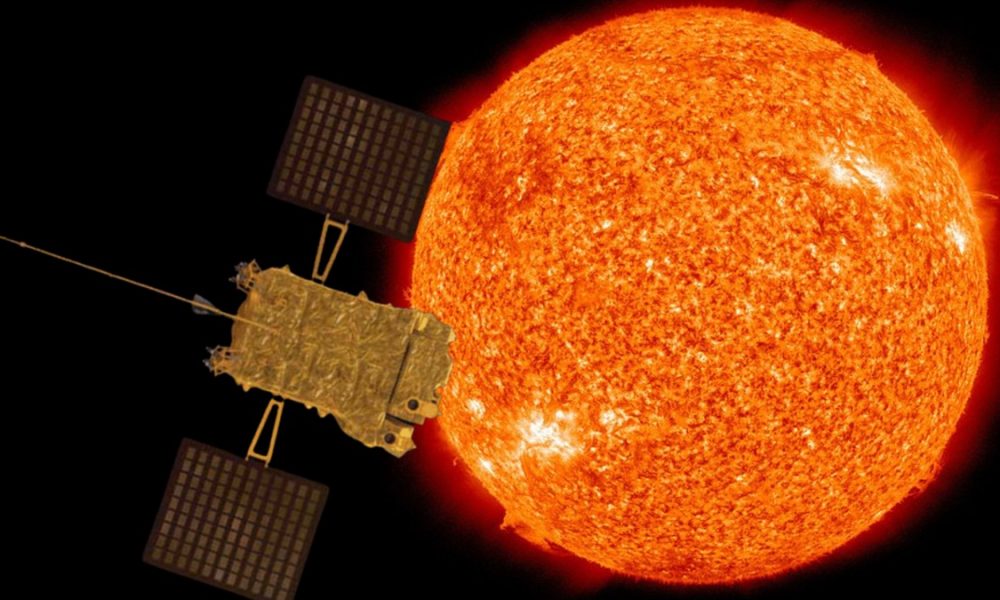
New Delhi: The Indian Space Research Organization (ISRO) mounted an X-ray spectrometer called HEL1OS on the Aditya-L1 spacecraft for its first solar mission, and it was able to catch the first high-energy X-ray glimpse of solar flares.
According to the space agency, HEL1OS was created by the Space Astronomy Group of the U R Rao Satellite Centre, which is part of the Indian Space Research Organization in Bengaluru.
ISRO announced on Tuesday that the spectrometer on board Aditya-L1 has captured the impulsive phase of solar flares during its first observation period, which began around October 29, 2023. This information was included in an update that ISRO sent on Tuesday. A solar flare, according to the explanation provided by the space agency, is a rapid brightening of the solar atmosphere.
Aditya-L1 Mission:
HEL1OS captures first High-Energy X-ray glimpse of Solar Flares🔸During its first observation period from approximately 12:00 to 22:00 UT on October 29, 2023, the High Energy L1 Orbiting X-ray Spectrometer (HEL1OS) on board Aditya-L1 has recorded the… pic.twitter.com/X6R9zhdwM5
— ISRO (@isro) November 7, 2023
According to a press statement from the space agency, flares result in increased emission over the whole electromagnetic spectrum, including radio, optical, UV, soft X-rays, hard X-rays, and gamma rays. Emissions from speeding particles and heated plasma make up a flare’s outward show.
Despite decades of research on solar flares in X-rays and gamma rays, characterising and understanding the early impulsive emission remains a challenge. There are several, time-varying spectrum components to the impulsive hard X-ray emission.
Aditya-L1 captures first high-energy X-ray glimpse of solar flares
Read @ANI Story | https://t.co/rbdsx0DXKT#ISRO #AdityaL1 pic.twitter.com/8iyXf5ROSF
— ANI Digital (@ani_digital) November 7, 2023
HEL1OS attempts to solve these problems by providing measurements with very high spectral and temporal precision, as well as a collection of detectors fine-tuned to cover a wide range of energies.
HEL1OS was officially launched on October 27, 2023, and is now undergoing threshold tuning and calibration. According to ISRO, the device will keep tabs on the Sun’s high-energy X-ray activity with precise timing and detailed spectra.
ISRO said that the data obtained from HEL1OS allows researchers to investigate the explosive release of energy and the acceleration of electrons that occurs during the impulsive stages of solar flares.
About Aditya-L1
At around 1.5 million kilometres from the surface of the Earth, the Aditya-L1 spacecraft is intended to do distant observations of the solar corona and in-situ studies of the solar wind at L1 – the Sun-Earth Lagrangian point.
Update from Aditya-L1:
𝘐 𝘢𝘮 9.2 𝘭𝘢𝘬𝘩 𝘬𝘮 𝘧𝘳𝘰𝘮 𝘌𝘢𝘳𝘵𝘩 𝘢𝘯𝘥 𝘷𝘦𝘳𝘺 𝘤𝘭𝘰𝘴𝘦 𝘵𝘰 𝘮𝘺 𝘯𝘦𝘸 𝘩𝘰𝘮𝘦 – 𝘓1😀#AdityaL1 pic.twitter.com/SnXcFpwWQ0
— Bharatheeyam (@Bharatheeyam9) November 7, 2023
This is the first mission in Indian space history specifically designed to make observations of the Sun. The mission’s objective is to conduct research on the Sun from an orbit around the L1 point, and it has seven payloads to accomplish this goal. These payloads will monitor the photosphere, chromosphere, and corona of the Sun using a variety of wavebands.
The spacecraft has completed many manoeuvres on Earth and one Trans-Lagrangian Point 1 Insertion (TL1I) manoeuvre so far without incident. The spaceship was able to leave Earth’s gravitational pull as a result.
Capturing the first High-Energy X-ray view of Solar Flares, according to an ISRO scientist, is a good sign that the mission is proceeding along the anticipated lines.
BIG ACHIEVEMENT FOR ISRO
ISRO’s solar mission Aditya L1 has captured its first high energy X-ray glimpse of solar flares. pic.twitter.com/PoHnQqsM5Q
— News Arena India (@NewsArenaIndia) November 7, 2023




